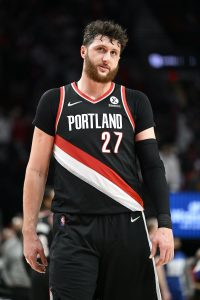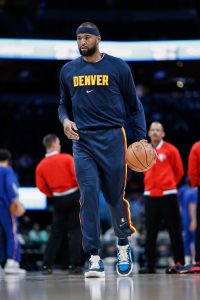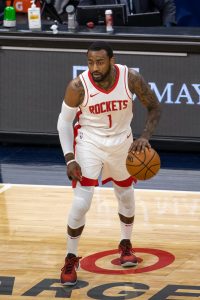While the Nets have been one of the NBA’s biggest underachievers this season, their performance hasn’t yet inspired much panic. The oddsmakers at BetOnline.ag, for instance, still consider Brooklyn the favorite to come out of the Eastern Conference this spring.
Unlike the disappointing Lakers, who haven’t looked great even when they’re playing at full strength, the Nets have played well during the rare instances when they’ve had something resembling a healthy lineup. But they’ve been missing key pieces for much of the season — Kevin Durant has only played in 42 of 69 games, primarily due to a knee injury, while Kyrie Irving‘s vaccination status has resulted in him making just 19 appearances to date.
On top of those issues, Ben Simmons has yet to make his Nets debut and Joe Harris is out for the season due to an ankle injury.
Harris won’t play again for Brooklyn this spring, but you could talk yourself into Durant, Irving, and Simmons all being available for the postseason. Durant is currently healthy; New York City’s private sector vaccine mandate could theoretically be adjusted in the next few weeks, freeing up Irving to play at home as well as on the road; and head coach Steve Nash expressed optimism this week that Simmons will make his Nets debut before the end of the regular season.
But things could just as easily go the other way. A pair of orthopedic specialists who spoke to The New York Post speculated that Simmons won’t return this season due to his ongoing back issues. And there’s still no timeline for New York City’s private sector vaccine mandate to change. Mayor Eric Adams said on Wednesday that he’s not going to base any decisions on whether or not the Nets have Irving available for the postseason.
“I’m focused on nine million people,” Adams said, per Kevin Sheehan, Bernadette Hogan and Sam Raskin of The New York Post. “And so, I am not looking at one person, I’m looking at my city not closing down again, not having to deal with this crisis again. … I’m not going to be rushed in based on a season schedule. I am going to do this right for the people of the city, and I’m not focusing on one individual.”
A healthy Durant and a solid collection of role players are capable of making some noise in the playoffs, but with Irving only available on the road and Simmons not available at all, Brooklyn’s ceiling would be limited.
It’s also worth noting that the 36-33 Nets will likely have to win at least one game in a play-in tournament before even clinching a playoff spot, and there’s no guarantee they’ll have Irving available in that scenario.
If the season ended today, the Nets would visit the 38-30 Raptors for the first play-in game, with the winner earning the No. 7 seed. A loss in that contest would mean hosting the Hawks (34-34) or Hornets (34-35), with the No. 8 spot up for grabs. Local vaccine mandates currently prohibit Irving from playing in either Toronto or Brooklyn.
The Nets could avoid that play-in dilemma by moving into the top six, but they’re still 3.5 games back of the No. 6 Cavaliers, so there’s some work to do on that front. With Irving only available for three more games this season, it seems just as plausible that the Hawks or Hornets could catch the Nets for the No. 8 spot, which would put even more play-in pressure on Brooklyn.
We want to know what you think. Obviously, the Nets’ upside hinges largely on Irving’s and Simmons’ availability, but based on what we know today, how do you see the team’s season playing out? Is Brooklyn headed for an early postseason exit, or is an NBA Finals appearance still within reach?
Vote in our poll, then head to the comment section below to share your thoughts!
 2021/22: $12MM
2021/22: $12MM 2021/22: $4.09MM
2021/22: $4.09MM For example, when
For example, when  However, the February 10 trade deadline came and went without the Rockets finding a deal they liked. And now that March 1 (the deadline for a player to be waived while maintaining his playoff eligibility) has passed, it appears virtually certain that Wall will remain on Houston’s inactive list for the remainder of this season.
However, the February 10 trade deadline came and went without the Rockets finding a deal they liked. And now that March 1 (the deadline for a player to be waived while maintaining his playoff eligibility) has passed, it appears virtually certain that Wall will remain on Houston’s inactive list for the remainder of this season.